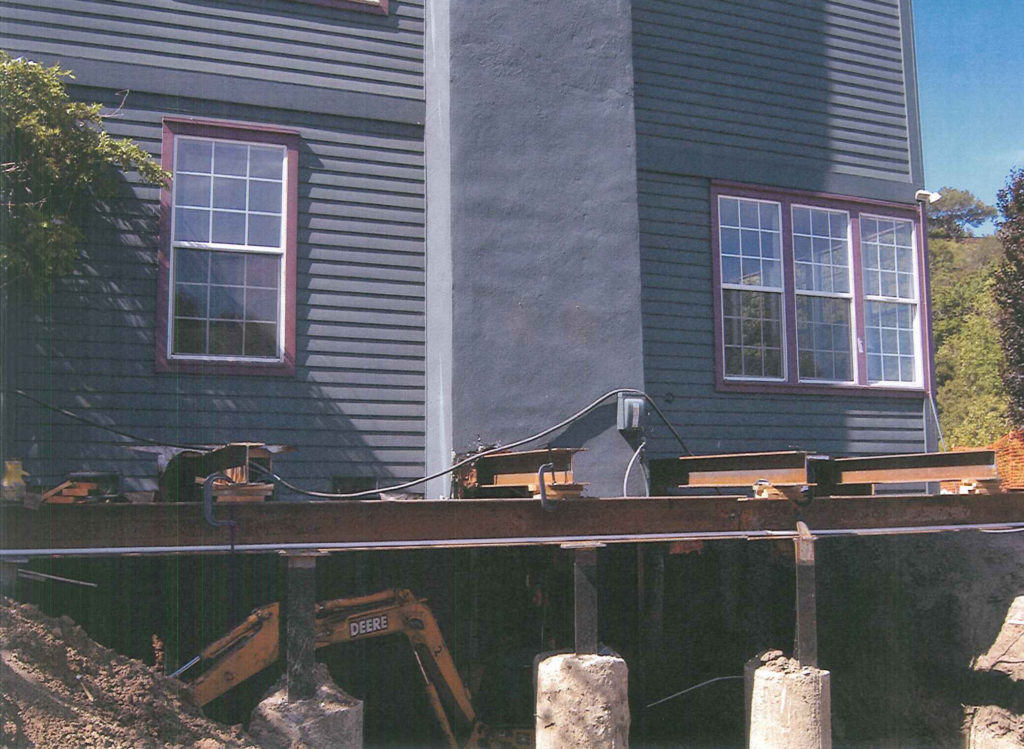
When it comes to vetting foundation contractors, one credential that’s often overlooked is EPA lead-safe certification. Photo: Engineered Soil Repairs, Inc. ©2019
If your home needs foundation work, you’ll obviously want to hire a contractor with plenty of experience and relevant industry certifications. However, one certification you may not have considered is EPA lead-safe certification. After all, that’s just for painters, right? The reality is that foundation contractors are just as beholden to the EPA’s rules on lead-safe protocol—a lesson Mark Corrallo of All Seasons Construction learned the hard way.
A bit of background: The EPA’s RRP Rule
The EPA’s Lead Renovation, Repair and Painting (RRP) Rule went into effect in April 2010 (though it has been amended as late as 2016). In the agency’s words, the rule “requires that firms performing renovation, repair and painting projects that disturb lead-based paint in homes, child care facilities, and preschools built before 1978 have their firms certified by the EPA (or an EPA authorized state), use certified renovators who are trained by EPA-approved training providers, and follow lead-safe work practices.” Of course, this is just a synopsis—the actual terms of the regulation are far more complex. Learn more about the EPA’s Lead Renovation, Repair and Painting Rule.
So, how does the RRP Rule pertain to foundation work? When performing a foundation replacement, a contractor must remove any exterior siding, shingles or stucco within 18 inches of the ground. These materials are usually painted, and if the home was built prior to 1978 (which is the case with most homes in the Bay Area), there’s a good chance some of that paint contains lead. That’s why foundation contractors need to be aware of and comply with the EPA’s lead-safe regulations.
A costly misunderstanding
As a foundation contractor, Mr. Corrallo never thought his company’s work posed any real threat of lead contamination. Hence his surprise when All Seasons Construction was fined by the EPA for RRP compliance violations in early 2019. “Given the nature of our work, I didn’t think that disturbing exterior lead-based paint was a concern,” he explains. “Unlike asbestos, lead-based paint contamination isn’t airborne—it can only cause harm if the paint is swallowed. While this would obviously be a concern inside a home or building, we were working outside and the home was vacant, so I couldn’t imagine it posed a legitimate risk.”
This isn’t to say Mr. Corrallo was wholly unfamiliar with the EPA’s lead-safe regulations. For instance, he knew the RRP Rule only required lead-safe protocol to be followed if more than 20 square feet of exterior surface was disturbed. The problem is his interpretation of “disturbed surface” differed from the EPA’s definition. “Let’s say you’re removing painted siding boards from a home exterior,” he posits. “In my mind, when you remove a board, the only thing that’s actually being disturbed is the seam between that board and the one above it, which is a quarter of an inch at most. As it turns out, the EPA counts the entire surface area of that board as being ‘disturbed,’ even if that board is eventually put back on the house. That’s why I was so surprised when we were cited—I assumed we were well below the minimum threshold where lead-safe protocol would be required. I wouldn’t have expected them to count all that undisturbed paint in their calculations.”
A lesson learned
Since the citation, Mr. Corrallo has taken rigorous steps to ensure All Seasons Construction is in full compliance with EPA regulations, including having his key foremen and managers trained on lead-safe protocol. “Our company is now 100 percent compliant with the RRP Rule,” he affirms. “On every job, we follow all procedures and provide all the administrative notices and documentation required by the EPA.”
Here are some of the steps required of contractors by EPA lead-safe protocol:
- The contractor must send the client an informational pamphlet about lead-based paint removal and the potential risks involved.
- Prior to starting work, the contractor must post signs around the work area warning of the potential lead-based paint hazard.
- During the removal of painted surfaces, the workers must follow lead-safe procedures. These include wearing protective gear and laying down plastic to ensure all displaced painted materials are collected for disposal.
- If the work area is close to an adjoining property, a plastic barrier must be erected to prevent lead-based paint contamination across the property line.
Mr. Corrallo is also doing his part to spread awareness of lead-safe protocol to All Seasons Construction’s clients. “We now include a section in our proposals that explains the potential lead-based paint hazard, lets the client know we’re EPA Lead-Safe Certified and recommends making sure any other contractors they work with are similarly certified.”
Regardless of whether you’re having your house painted or your foundation replaced, it’s best to make sure all contractors working on your home are EPA Lead-Safe Certified and follow proper practices.
Find a Diamond Certified foundation contractor in your area.
